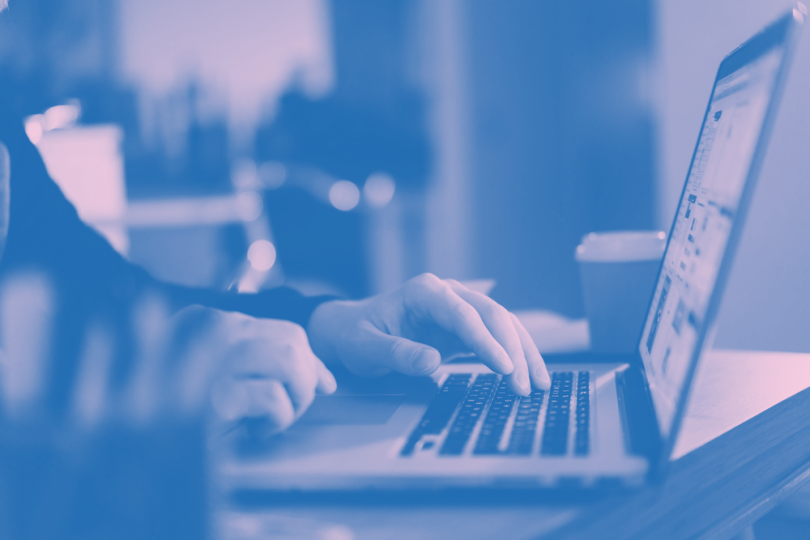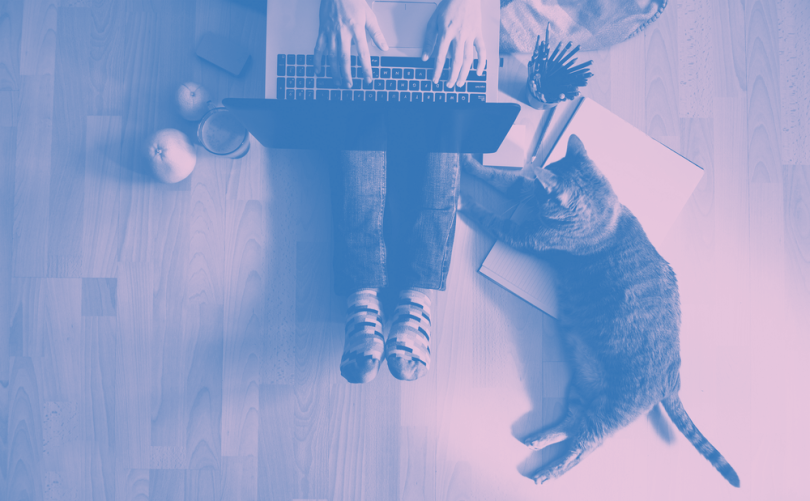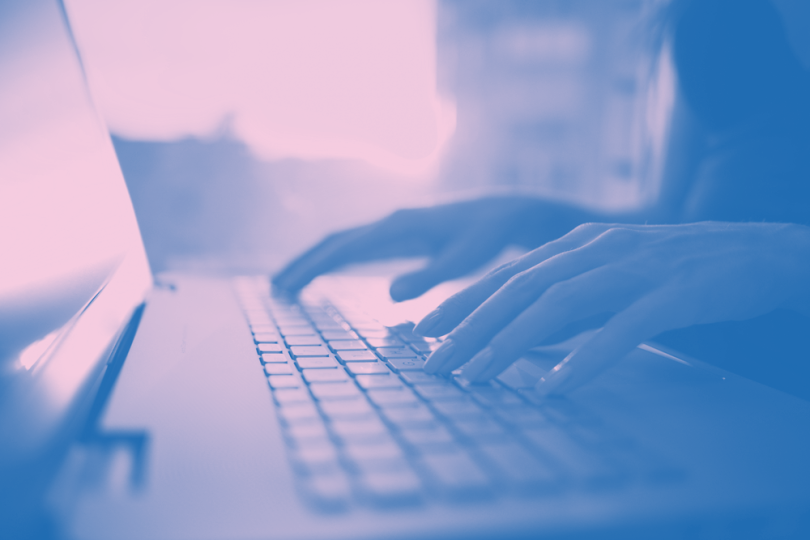“Calm brings calm; panic brings panic.”
That epigrammatic bit of guidance, courtesy of Cathleen Swody, an organizational psychologist and founding partner of management consultancy Thrive Leadership, would have been sound advice even prior to the spread of COVID-19. Now, it sounds downright essential.
As we collectively work together to quell the spread of contagion, we must also be aware of what behavioral experts call emotional contagion — the idea that the emotions we communicate are, well, communicable. Making sure employees are sharing news and personal feelings about the pandemic responsibly and measuredly is vital, Swody said, even as the new wide-scale work-from-home reality — and its attendant mediated communication — complicate the process.
“Especially if you’re a leader or if you’re on a more public forum or group chat, you want to maintain an almost objective tone,” Swody told Built In. “‘These are the facts’ versus ‘Did you just see what happened?’ ... But you also don’t want to be robotic. People don’t trust robots; they trust people.”
That concern of balance permeates just about every facet of managing anxiety while communicating remotely in our current moment — participating in optional virtual hangouts vs. taking time to retreat and work; informing vs. overwhelming, be it yourself or others. It’s a dynamic with which workers across the globe are becoming intimately familiar, but one that could use edification.
We asked Swody and Bethany Teachman, professor of psychology and director of University of Virginia’s Program for Anxiety, Cognition and Treatment (PACT), to share their thoughts.

Sharing Information
We’re all trying to stay well-informed and keep our coworkers informed too, but employees should weigh at least three considerations before sharing news of the day, Teachman said. Consider what you’re sharing, the frequency with which you’re sharing, and with whom you’re sharing.
Three things to think over before sharing COVID-19 news with coworkers:
- Consider what you’re sharing.
- Consider the frequency with which you share.
- Consider with whom you are sharing.
It may sound obvious in the era of weaponized misinformation, but first, make sure the information comes from a credible source. “There is so much misinformation, which can be quite damaging if it leads people toward unhealthy behavior, instead of following the [Centers for Disease Control and Prevention] recommended guidelines,” Teachman said.
The prescription is not dissimilar from news-posting recommendations related to social media. Make sure any information you pass along to coworkers comes from a reliable news outlet or organization. “Credibility of source has to be kept in mind,” Teachman said. (Of course, what constitutes credible news is it’s own sometimes-fraught conversation, but resources such as Media Literacy Now and News Literacy Project are available to help facilitate responsible news consumption.)
Also, be judicious about how often you’re sharing COVID-19 news through email, Slack or other communication tools. “If you’re sending five [pandemic-related] messages a day, that may be a sign that you’re overwhelming someone,” Teachman said. “We don’t need to be getting the same message from 50 people.”
Think of how you feel as a news consumer yourself. “We’re currently being bombarded,” Teachman said, “And we know that’s not a good thing for our mental health.”
Also, ask yourself why you’re sharing. If the answer, at the core, is more about being heard than genuinely helping, rethink the share.
“People need to keep in mind as they communicate, What is my intention in sharing this information?” Swody said. “Do they need it or is it extraneous? Am I just passing along information because I have it and I feel like I need to do something?”
And again, consider the person on the receiving end and whether they really need to be looped in. For example, if you need to lean on coworkers for social support or share personal challenges, “reaching out to your close colleagues makes a lot of sense, [but] sending that information out on the whole work listserv probably doesn’t make as much sense,” Teachman said.
Offering and Seeking Support
Speaking of support, having an avenue to request or provide moral and psychological help is essential. “In addition to sharing information about your own needs, saying that you’re available to talk to those having a hard time, or those with questions about how the current work situation is going to affect their productivity, can be a really helpful thing to do,” Teachman said.
As it turns out, lending your hand may be just as helpful to yourself as the person you’re helping. “Research shows that supporting others actually has huge benefits for your own mental health, as well as the assistance it provides to others,” said Teachman, pointing to a 2016 study that found providing, even while not receiving, social support “was related to reduced stress-related activity.”

Measure Your Tone. Monitor Reactions.
In terms of tone, the issue of balance once again appears. There’s no sense in denying what we all know is happening — and isn’t — right outside our windows, but not every communication needs to center around the pandemic.
Teachman points to a small change in her email habits. Her signoffs now include this optimistic note: “I hope you’re doing well during these challenging times”
“It recognizes the situation, but doesn’t present it as one that can’t possibly be managed, if we take precautions,” she said. “But it acknowledges the challenge, and that we’re sharing that challenge together.”
That said, emergencies tend to be fluid, so be considerate of where we are in the course of the pandemic and modulate accordingly. Such an email note “seems very reasonable to me in these first few weeks of extreme social distancing, working remotely and all these changes we’re all grappling with.”
“However, by the time we’ve been emailing with people, say, three months on, we probably will have shifted a little bit and might be doing less of that sort of crisis-type language,” Teachman said.
On the topic of tone, Swody offers a sidebar recommendation: Pause the sarcasm. “I love sarcasm, but now’s not the time,” she said. Couple stressed workforces with the fact that all our work communication is now mediated and you have a tinderbox for misinterpretation. “It’s fine to have some humor and be lighthearted, but toning down the sarcasm is a positive thing now.”
That points to a communication paradox of the moment. Never has the need to communicate clearly felt so important, and yet mediated communication makes it harder to glean nonverbal cues and gauge reactions in general. Monitoring reactions in such an environment takes on added importance.
“Are people saying. ‘Thank you, I was looking for this information’ or are they going radio silent? That might be a clue that they’re feeling inundated,” Swody said.
Managing Overall Exposure to Media
A much-cited 2017 poll by the American Psychological Association, called “Stress in America,” found that, while 95 percent of adults said they regularly follow the news, more than half say “doing so causes them stress.”
Still, experts disagree over whether or how news consumption causally relates to psychological well-being, and some media and communication experts caution against forecasting in aggregate psychological responses to following the news.
That said, Teachman is among those who recommend setting limits — especially in extraordinary times like this. Just as we shouldn’t bombard colleagues in our Slack channels with minute-by-minute updates, we should extend ourselves the same courtesy.
“If we’re constantly refreshing screens and reading every rumor and post, it becomes very overwhelming and does fuel a sense of anxiety and dread in people,” Teachman said. She recommends choosing two times per day to gather news updates from reliable sources. Maintaining normalcy as much as possible outside those check-ins will help maintain mental and emotional health, she said.
It’s not all that dissimilar to the cognitive behavioral therapy technique known as “worry time,” the anxiety-disorder treatment approach of designating a specific time or times of day to quietly reflect on what’s troubling you.
“You consider your concerns and what problem-solving may be needed, but you concentrate it on those particular times,” so you can focus during the rest of the day. “That’ll be critical to helping you to feel healthy and manage your anxiety,” she said.

Speaking Informally
A slew of forcedly remote companies are coming up with clever ways to approximate in-office camaraderie via virtual hangouts, ranging from “quarantini time” to Slack-hosted trivia contests to virtual hackathons.
Those sorts of informal e-gatherings can be great for letting people burn off steam while also staying connected, Swody said. “People can have a lot of creativity there, and we really need to keep those social bonds going,” she added.
At the same time, remember: We’re in uncharted territory, so give yourself flexibility to opt in or out.
“This is a trial-and-error period,” Teachman said. “People might find out they really like the company’s virtual coffee hour, but they don’t really enjoy the two-person breakout Zoom conversations. People can join the virtual interactions that work well for them and take a break from the ones that don’t work for them.”
That said, beware of patterns of isolation in how you interact virtually at work. “We know that as people become depressed and more clinically anxious, they tend to withdraw and avoid,” Teachman said. Individuals of course vary in terms of desired social contact, based on levels of introversion and extroversion. Whatever one’s personal baseline, be alert for wild fluctuations.
“What you’re watching for are big changes in what would be one’s normal level of desired interaction,” Teachman said.




